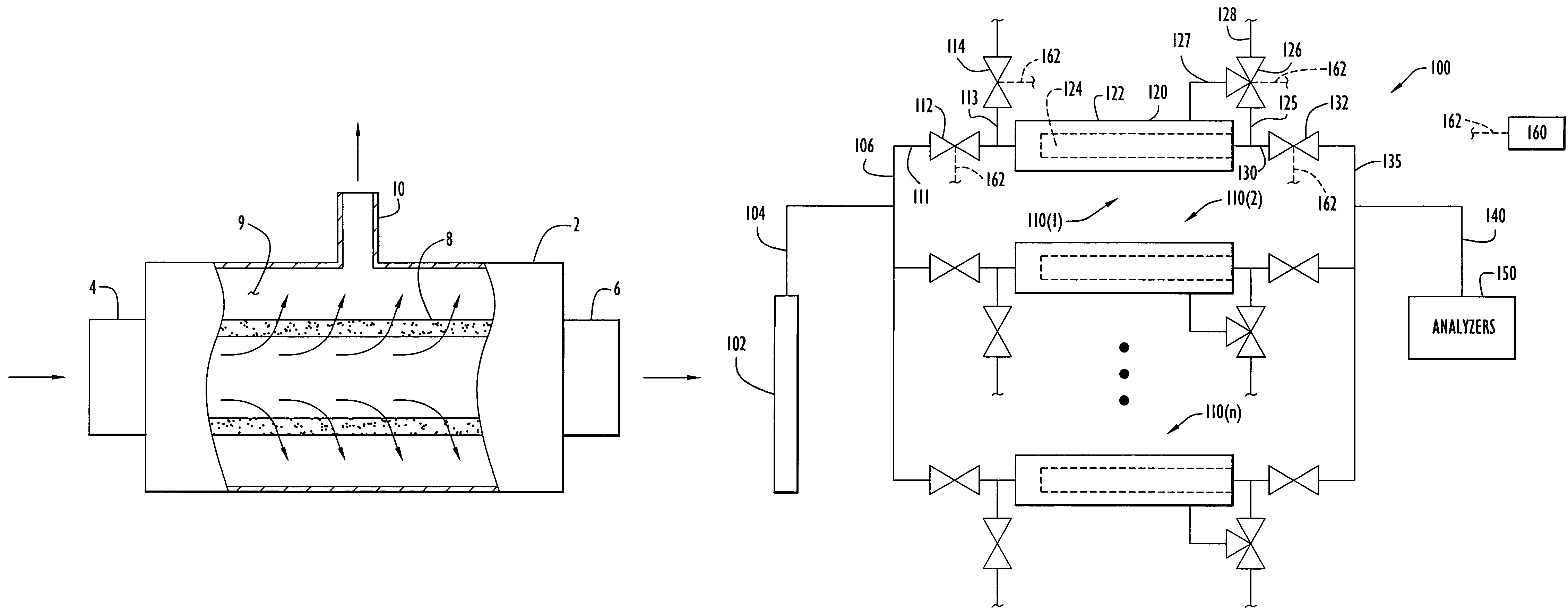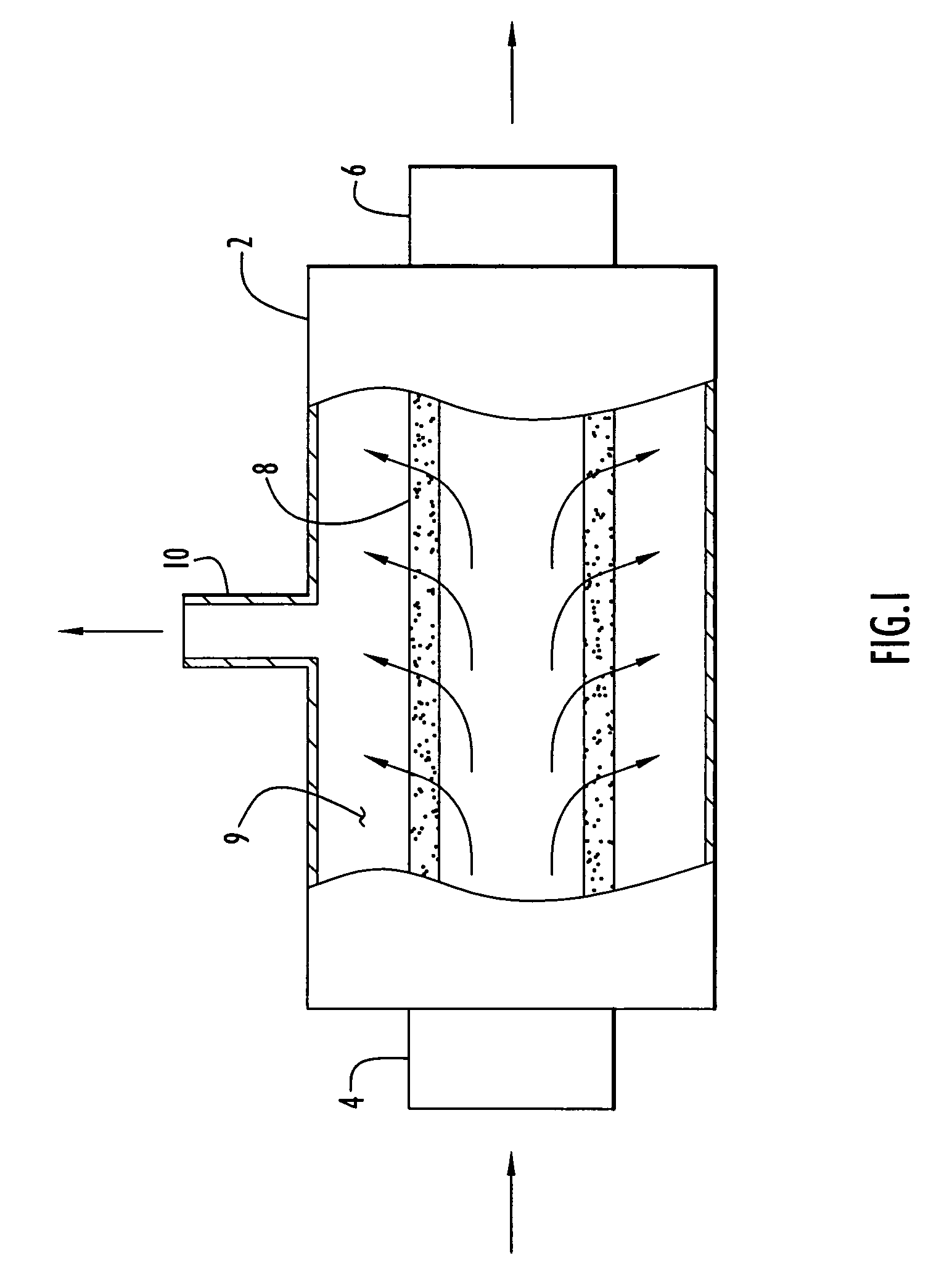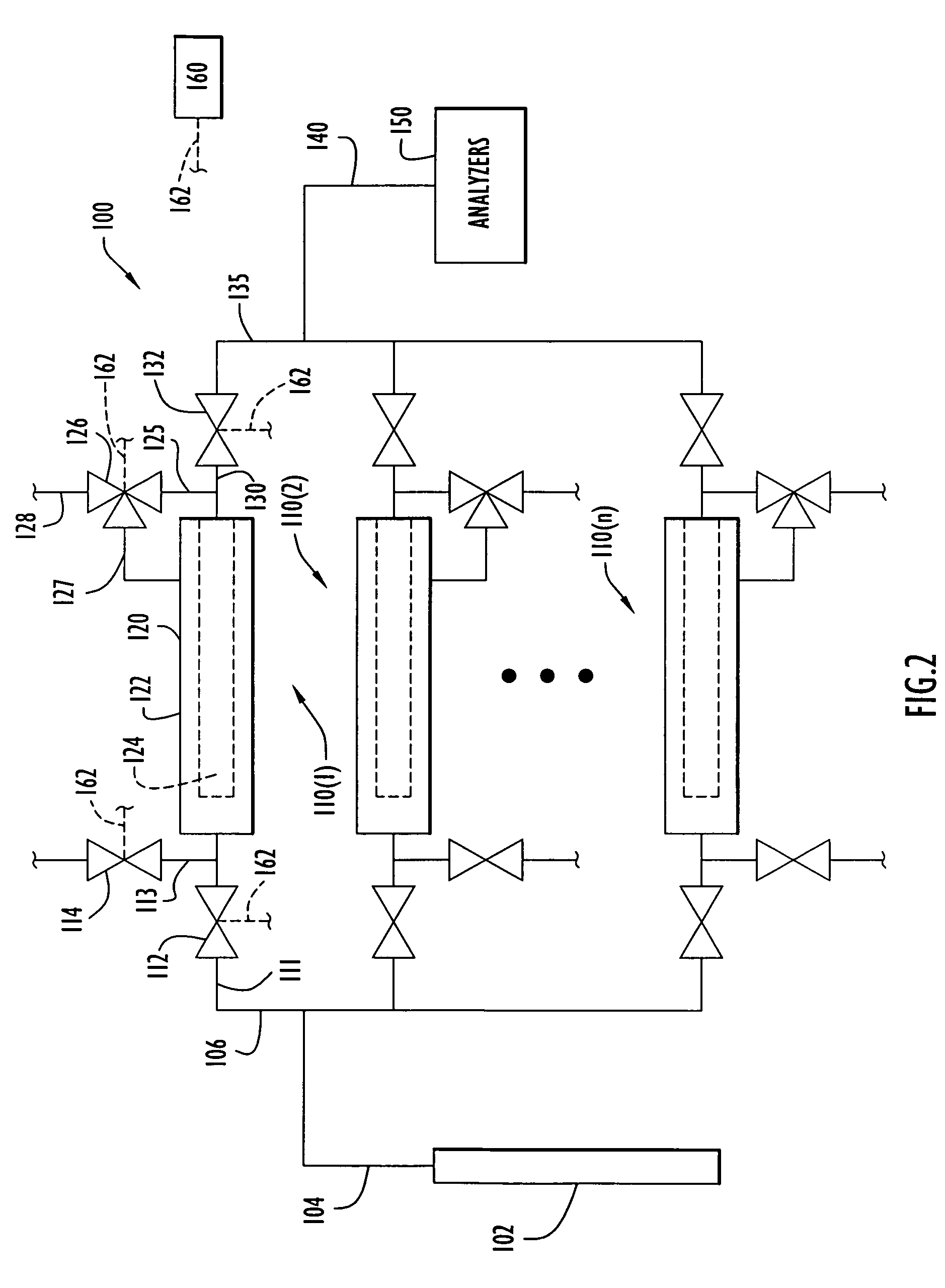Filtering particulate materials in continuous emission monitoring systems
a technology of emission monitoring system and filtering particulate materials, which is applied in auxillary pretreatment, instruments, separation processes, etc., can solve the problems of further interrupting the continuous gas monitoring process, reducing or completely restricting the flow of gases to the analyzer, interruptions and delays, etc., to facilitate effective blowback of the sample line
- Summary
- Abstract
- Description
- Claims
- Application Information
AI Technical Summary
Benefits of technology
Problems solved by technology
Method used
Image
Examples
Embodiment Construction
[0019]An extractive sampling system for continuously monitoring gaseous and / or other types of fluid emissions (e.g., liquids) from an application or process includes a main sampling line with a plurality of separate conditioning lines connected in parallel or a multiplexed manner to the main sampling line, where each conditioning line includes a filter to remove particulate materials from a sampled gas stream flowing through the conditioning line.
[0020]The conditioning lines can include any one or more suitable types of filters for filtering particulate materials of selected sizes from the gaseous sample. The filter material can be of any suitable type, such as sintered metal or ceramic materials. The pore size of the filter material can also be of any selected size, such as in the range of about 5 micrometers (microns) to about 50 microns depending upon a particular application. The filter material can also include smaller pore sizes (e.g., 1-2 microns or less) for a particular app...
PUM
| Property | Measurement | Unit |
|---|---|---|
| temperature | aaaaa | aaaaa |
| pore size | aaaaa | aaaaa |
| pore sizes | aaaaa | aaaaa |
Abstract
Description
Claims
Application Information
 Login to View More
Login to View More - R&D
- Intellectual Property
- Life Sciences
- Materials
- Tech Scout
- Unparalleled Data Quality
- Higher Quality Content
- 60% Fewer Hallucinations
Browse by: Latest US Patents, China's latest patents, Technical Efficacy Thesaurus, Application Domain, Technology Topic, Popular Technical Reports.
© 2025 PatSnap. All rights reserved.Legal|Privacy policy|Modern Slavery Act Transparency Statement|Sitemap|About US| Contact US: help@patsnap.com



